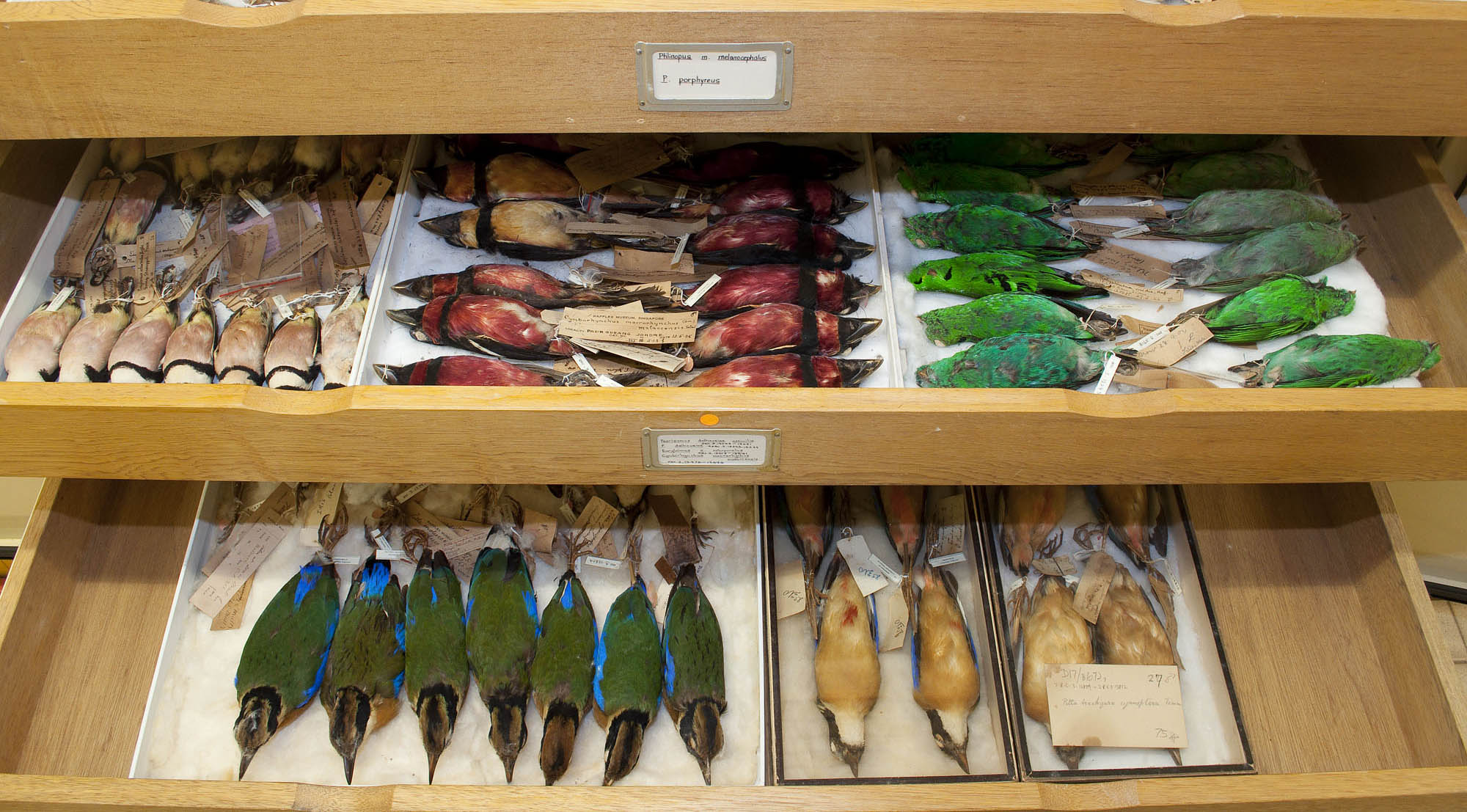About
GENERAL INFORMATION
The Raffles Bulletin of Zoology (RBZ) is a peer-reviewed journal, which publishes high quality papers in Taxonomy, Ecology and Conservation Biology of animals from Southeast Asia and its adjacent areas.
The journal aims to build up quality information on the “animal diversity” of Southeast Asia in particular. The journal will also publish papers from outside the stated geographic range that deal with material deposited in the Zoological Reference Collection (ZRC) of the Lee Kong Chian Natural History Museum (LKCNHM), National University of Singapore. Both descriptive and experimental papers will be considered. Similarly, both single species (except for insect taxa) and ecosystem studies will be considered for publication. Single species descriptions for insect taxa are not accepted except under strong recommendations from Editors. Manuscripts that are checklists or based on new records will no longer be accepted unless they are of significant scientific value. Papers outside the stated policy and new records of animals will only be accepted at the discretion of the Editors/Editorial Board.
The Raffles Bulletin of Zoology will consist of a single volume each year. A separately numbered supplement series will be published as and when manuscripts and funding permits. From 2005, the RBZ was converted to an online publication. As such, very few hardcopies are printed and papers published in the RBZ are circulated as PDF files. Papers published in the RBZ will be available for downloading via the RBZ website for research purposes.
HISTORY
A growing museum needs an organ to publish its findings. On this rationale, plans were prepared in 1928 by the Raffles Museum for the publication of a journal of Malayan zoology. On September 1928, the first issue of the Bulletin of the Raffles Museum made its debut, with papers on both Anthropology and Zoology forming the backbone of the bulletin.
It has been about 80 years since that fateful moment. The journal has undergone several changes in name and survived a destructive war and many years of neglect. The Bulletin of the Raffles Museum continued under this name, through the Second World War, until 1960. During these 32 years, 29 numbers (= volumes) were published. In 1961, the journal underwent a change in name to become the Bulletin of the National Museum. This was in line with the Singapore state government becoming independent from the British and becoming part of Malaysia. Only three numbers, however, were published before Singapore achieved full independence. With nationhood, the journal’s name changed again, albeit only slightly – it was now known as the Bulletin of the National Museum Singapore. Again, only three numbers were published before the museum itself was revamped in 1970, and zoology was removed from its responsibility. The zoological collections were eventually transferred to the National University of Singapore (NUS), and for all effective purposes, the journal, with volume 35, died, or so it was thought.
In 1987, Dennis H. Murphy (aka Paddy), then a senior lecturer of the National University of Singapore, obtained funds from the Turf Club to resurrect the Bulletin of the Raffles Museum. As the Raffles Museum was now defunct, Paddy changed the name of the journal to the Raffles Bulletin of Zoology. The journal, now published by NUS, was not to be a de novo venture. It was to carry on with the philosophy, spirit and numbering of its famed predecessor. In 1988, the first issue of the journal, presenting a catalogue of the primates in the collection, was published.
The chronology of this famous journal over the years, in summary (publisher in parenthesis), is as follows:
Bulletin of the Raffles Museum (Singapore, Straits Settlements, 1928-1941) (Volumes 1-17)
Bulletin of the Raffles Museum (Colony of Singapore, 1947, 1949) (Volumes 18, 19)
Bulletin of the Raffles Museum (Singapore, 1949) (Volume 20)
Bulletin of the Raffles Museum (Colony of Singapore, 1950) (Volume 21)
Bulletin of the Raffles Museum (Singapore, 1950) (Volume 22)
Bulletin of the Raffles Museum (Colony of Singapore, 1950, 1952, 1954) (Volumes 23-25)
Bulletin of the Raffles Museum (State of Singapore, 1961) (Volumes 26)
Bulletin of the Raffles Museum (Colony of Singapore, 1956) (Volumes 27-28)
Bulletin of the Raffles Museum (State of Singapore, 1960) (Volume 29)
Bulletin of the National Museum (State of Singapore, 1961-1963) (Volumes 30-32)
Bulletin of the National Museum (Republic of Singapore, 1966) (Volume 34)
Bulletin of the National Museum Singapore (Singapore, 1965-1970) (Volumes 33-35)
Raffles Bulletin of Zoology (National University of Singapore, 1988- present) (Volumes 36-present)
The Growing Years
The concept of the Raffles Bulletin of Zoology, as originally conceived and managed by D. H. Murphy in 1988, was to rapidly publish papers on Southeast Asian natural history and what he defined as “whole-animal zoology”. Due to various problems, the first two volumes (equivalent to the numbers of the old series), were monographs, dealing with only one group of animals each. Peter K. L. Ng was co-opted as an editor in late 1988 to help run the journal. Through persuasion of various taxonomists, the two editors finally managed to obtain 18 papers to publish a volume in 1989. The new era of the Raffles Bulletin had begun. In 1990, the plan for two numbers (parts) a year (per volume) was realised, with the publication of 19 separate scientific papers.
In 1991, Peter Ng “inherited” the journal from Paddy Murphy on his retirement. By this time, the original funds from the Turf Club had been exhausted, and the Department of Zoology took over financial responsibility for the journal. In line with the department’s (i.e., the head, T. J. Lam’s) hope to publish a top quality international scientific journal, the editorial board was revamped and the policy of peer review by international experts was made mandatory.
For the next five years, the editorial structure was regularly reviewed and an international body of experts was eventually co-opted to sit on the board. By 1996, the board included top men in their field like Edward O. Wilson (biodiversity), Daniel Simberloff (ecology), Herbert Fernando (limnology), J. E. Randall (fish), L. B. Holthuis (crustacea and nomenclature) and Brian Morton (malacology and marine biology). All papers were also reviewed by at least two international experts in their field. The practice of two numbers a year was made the standard, with each number always coming out on time. As far as possible, all papers were also published within six months of acceptance. In addition, single-issue monographs were still published, but now as special supplements. The quality of the journal was also gradually upgraded. This modus operandi certainly paid dividends, and the number of quality papers submitted to the Raffles Bulletin increased year by year. By 1993, having enough quality papers to publish annually was no longer a problem. The journal also catered for the research activities of the staff and students in the department, with a good proportion of papers being derived this way.
In 1995, the Raffles Bulletin was formally accepted by the Institute of Scientific Information (ISI) for inclusion in Current Contents – Agriculture, Biology & Environmental Science, the top indexing journal in the market. The contents of the Raffles Bulletin can now be disseminated to a very wide, international audience. Inclusion into Current Contents was no mean task, as a scientific journal must have demonstrated its scientific quality, regularity of publication and international value over time.
The Next Phase
Today, the titles in the Raffles Bulletin are captured not only in Current Contents, but also in Scisearch, Cambridge Scientific Abstracts, Biological Abstracts, Aquatic Sciences & Fisheries Abstract and Research Alert. It is also exchanged with or subscribed by over 100 institutions throughout Asia, Europe, America and Australasia. It is therefore widely known by all researchers in biodiversity. It is now generally acknowledged by scholars of biodiversity as the best journal of its research scope in the region and one of the best in the world.
In 1996, Navjot Sodhi took over the helm of the Raffles Bulletin, with a new mandate – to bring the journal to an even more professional level. With his ecology background, the Raffles Bulletin was also poised to attract more ecology papers, in contrast to earlier years in which the journal had a stronger taxonomic slant. The local members of the editorial board were also reorganised, with selected members becoming associate editors responsible for specific groups of animals. This was in view of the sharp increase in the number of submitted manuscripts. A one- or two-man show as in the days of old was simply no longer possible. Darren Yeo took over the reins of the Raffles Bulletin in 2001 and pushed the journal to greater heights in terms of quality and scope of the papers published. Tan Swee Hee took over the Managing Editor’s post from Darren Yeo in the beginning of 2005 and transformed the then traditional printed journal into an electronic journal with an online presence. Tan Heok Hui took over as Managing Editor on 1 September 2010, followed by Jose C. E. Mendoza in 2016.



